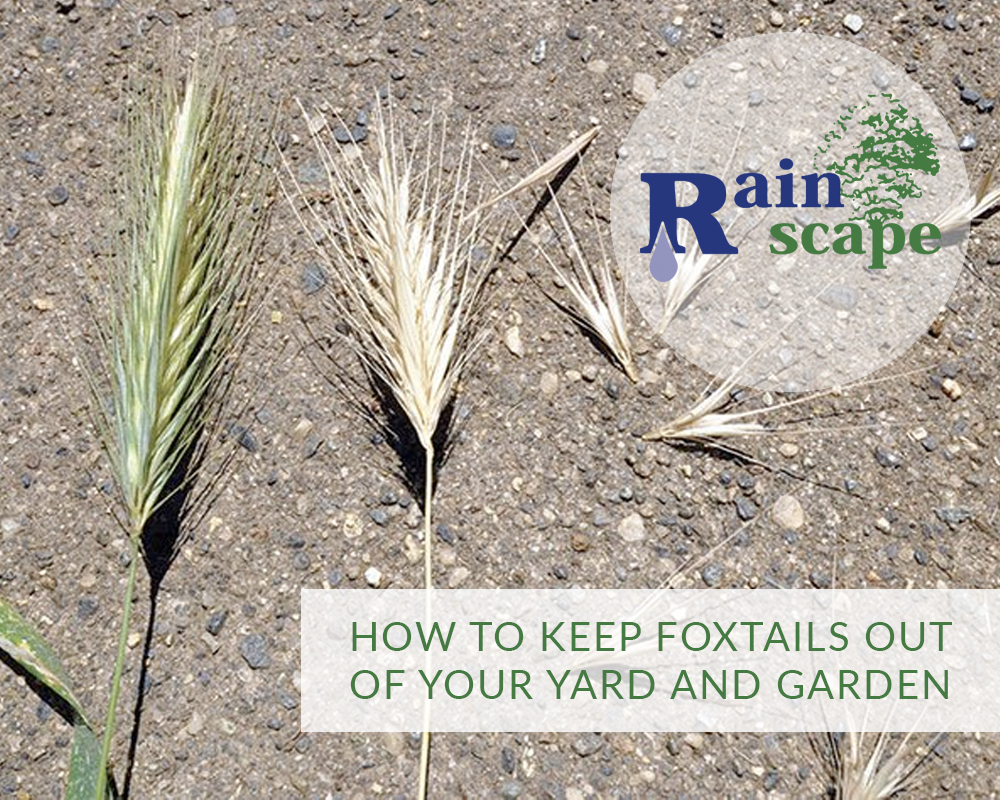Foxtails. The name sounds cute, but foxtails are a nuisance that can damage your landscape, harm pets or children, and cause all kinds of trouble if left to grow uncontrolled. Now is the time to take action to prevent foxtail weeds from taking over your home and gardens.
Foxtails are an annual grass that, like crabgrass, rears its ugly head in summer. It gets its name from the bushy tops of the stalks it produces, where the seeds are, that look like bushy little fox tails. That fox tail may look soft, but it actually consists of layers of upward-facing spines that protrude from the center, giving it the ability to grab onto anything that brushes again it and be carried around so its seeds can spread.
Here in Visalia and throughout California’s Central Valley, foxtails are common and start popping up in the spring. They can show up almost anywhere, in home yards and gardens, community landscaped spaces, on hiking trails, in open fields and in schoolyards and sporting venues.
The best way to deal with foxtails is prevention. This means stopping them before they get started and can establish themselves. Pre-emergents that work on crabgrass will also work on foxtails, so if you’ve seen foxtails growing around your home be sure to apply a pre-emergent in the early spring to prevent foxtail seeds from sprouting. (For more information on pre-emergents, click HERE.)
A healthy lawn is also an effective weapon against foxtails (and any other weeds). Proper mowing and maintenance to keep your grass, plantings and landscape healthy will help the plants you want stay healthy and keep unwanted plants, such as foxtail, from making an appearance.
Foxtails and pets
Foxtails can also pose a danger to pets and children if they are allowed to grow in areas where they roam or play. The barbed seed heads, can detach and cling to something that brushes up against them. The soft, bushy appearance can often appeal to young children at play, and dogs and cats often brush up again them as they explore. Those barded seed heads are able to “travel” on the person or animal and the spikes try to dig into the surface. For humans, this means irritating the skin and damaging clothes.
For pets, however, the damage can be much worse. Animals cannot remove them, and if left unattended, the barbs will work their way into any part of your dog or cat, from the nose to between the toes and inside the ears, eyes, and mouth. Embedded foxtail can lead to infection, illness, and at the worst, death for pets.
If you find foxtails on your pet, remove them if you can. Brush out long-hair dogs or cats each day if they run loose in areas that might have foxtails. Signs that foxtail seed heads might be in areas you can’t see (such as in ears, nose or eyes) include tilting head to side or shaking head a lot, scratching incessantly at ears, redness, discharge, swelling, squinting and watering eyes, and frequent sneezing. If they are too deeply embedded, or the area around it is red or swollen, call your vet. Foxtails will not come out on their own, so the assistance of a vet is necessary.

